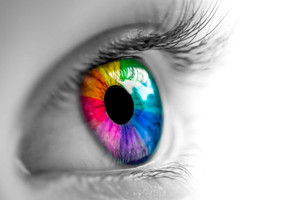How Humans See Colors?
Just think of a colorless world? Terrific isn't it? Colors play a very important part in our life. They help us to remember objects and spark our emotions in a beautiful way. But in fact objects do not possess any color and it is just the reflected light wavelength which is seen as a color. It is found out that human beings can differentiate 10 million colors.
Let us see how our brain does the magic of seeing colors. For example when light hits an apple, the Apple absorbs some light and reflect the remaining. The reflected light enters our eye through the cornea and reaches to the pupil. The Pupil acts as a light control centre and controls the light which hits the lens and the lens focuses it to the retina.
The retina contains two different types of cells known as rods and cones. Rods and cone cells are also known as photoreceptors and are sensitive to light. It is estimated that our eyes contain nearly 110 million rods and 6 million cones. Cones contain color detecting molecules and can detect red, blue and green color. They are also sensitive to different light wavelength. The light signals are sent to the visual cortex of the brain and the brain in turn processes the number of cones and finally we see a color.
A person suffers from color blindness when one or more cones are not functioning properly. The most common one is red/green color blindness. Insects, birds and fish have four types of cones with which they can even see ultraviolet light. The wavelength of ultraviolet light is shorter and so humans cannot see it. Dogs have less number of cones and they cannot see colors like humans.



 Jun 25th 2020
Jun 25th 2020